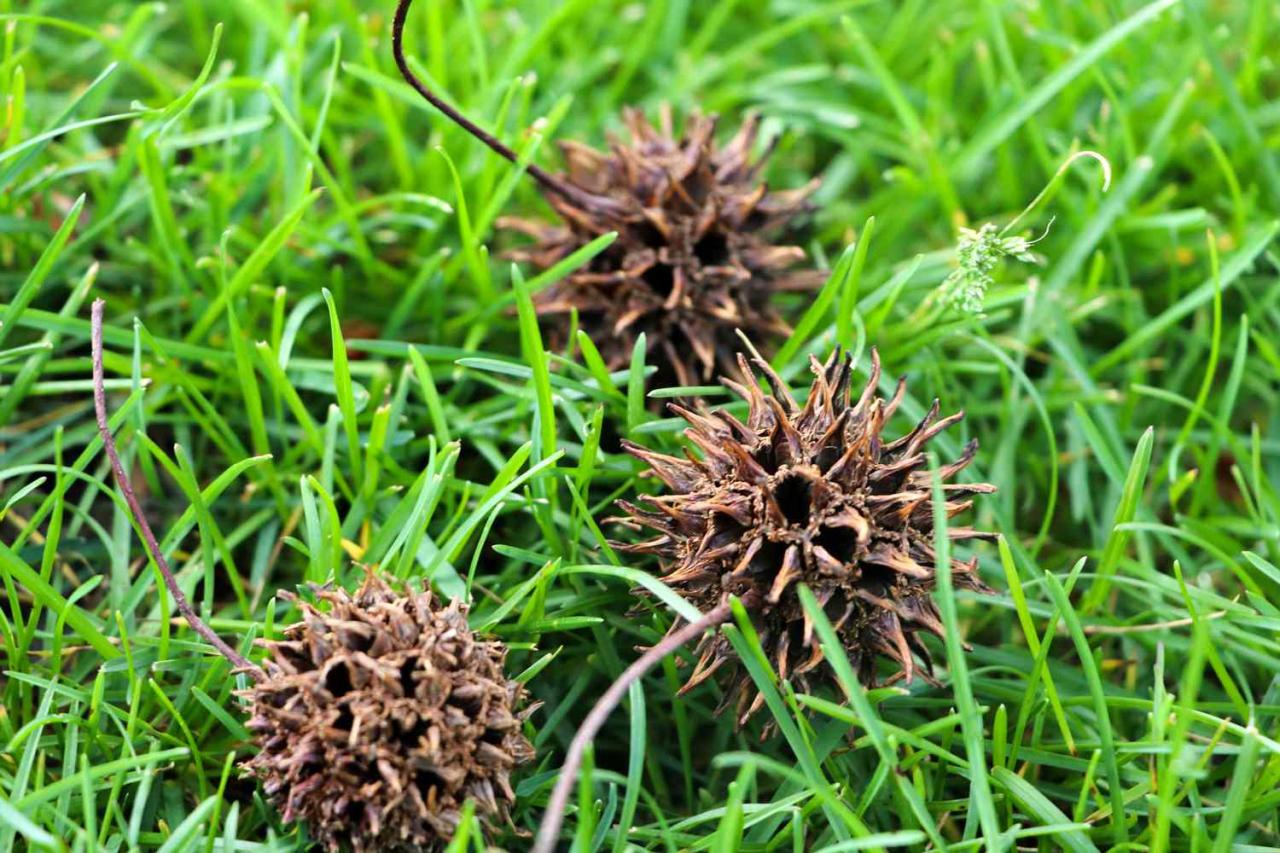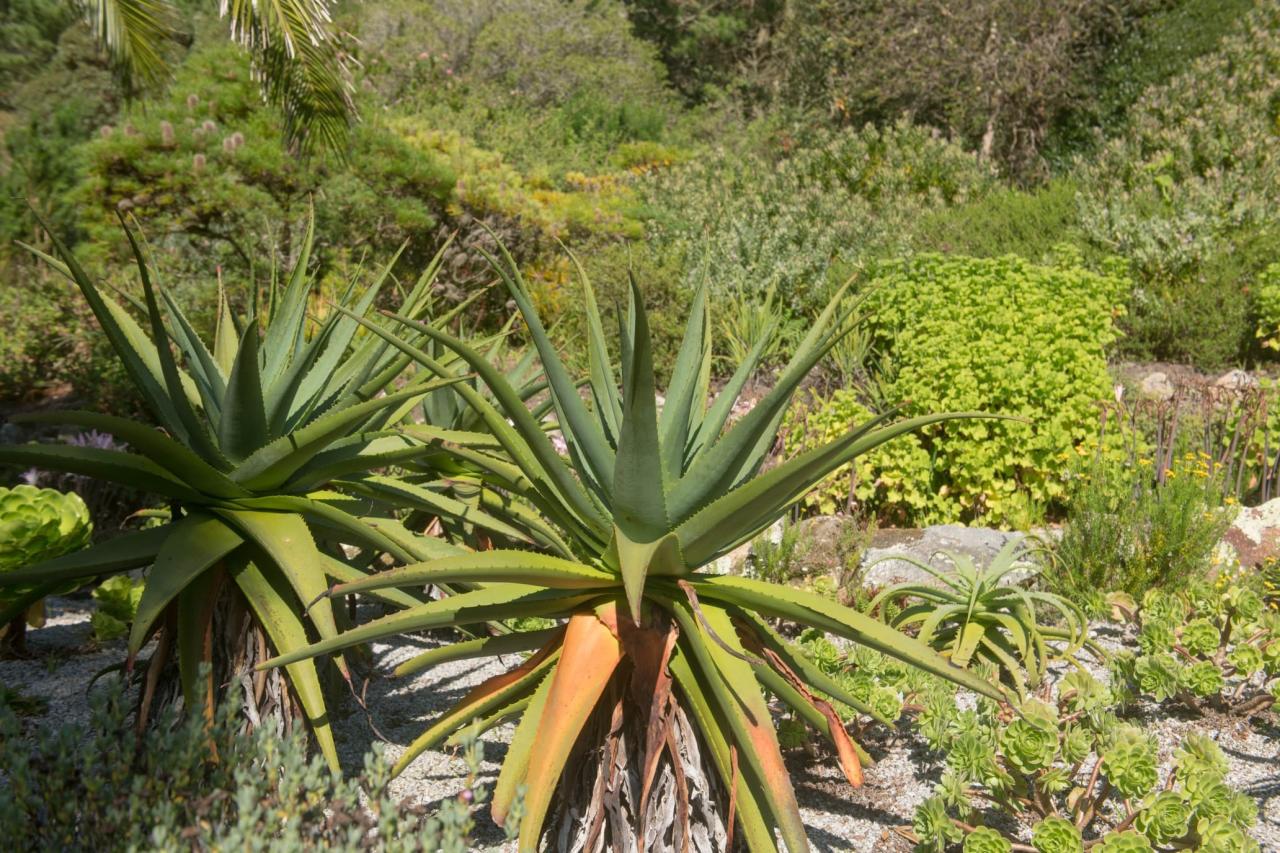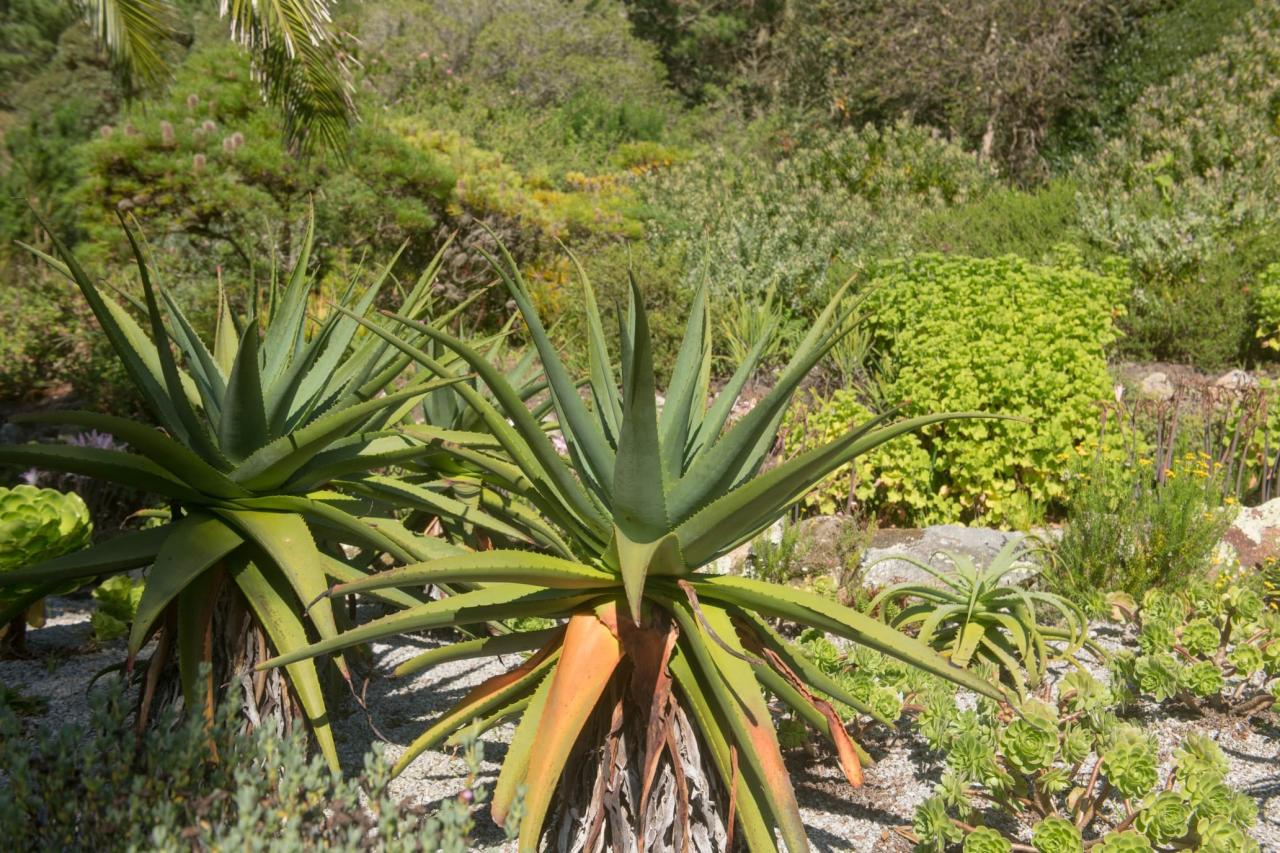Why Spiky Seeds Are Taking the Gardening World by Storm? The answer lies in a captivating blend of visual appeal, ecological benefits, and innovative advancements. Spiky seeds, once considered a niche gardening trend, are now experiencing a surge in popularity, captivating gardeners with their unique textures, vibrant colors, and surprising resilience.
From the historical use of spiky seeds in traditional gardening practices to their modern-day role in sustainable landscaping, this article explores the multifaceted reasons behind this captivating trend.
This newfound fascination with spiky seeds stems from a growing appreciation for their distinct aesthetic qualities, ecological benefits, and adaptability to diverse growing conditions. Gardeners are drawn to the bold textures and striking patterns that spiky seeds introduce into landscapes, creating a dynamic and visually engaging experience.
Beyond aesthetics, spiky seeds are recognized for their resilience, attracting pollinators, and fostering biodiversity, making them an attractive choice for environmentally conscious gardeners.
The Rise of Spiky Seeds
The gardening world is experiencing a surge in popularity for spiky seeds, a trend driven by a combination of factors, including their unique aesthetic appeal, resilience, and potential for attracting pollinators. While spiky seeds have been used in gardening for centuries, their recent resurgence is fueled by a renewed interest in natural and sustainable gardening practices.
Historical Context of Spiky Seeds in Gardening
Spiky seeds have a long history in gardening, dating back to ancient civilizations. Their use was driven by practicality, as spiky seeds were often more resistant to pests and diseases. For example, ancient Egyptians used spiky seeds of the prickly poppy (Papaver argemone) for medicinal purposes, while ancient Romans utilized spiky seeds of the thistle (Cirsium) for their prickly leaves, which were used as a natural defense against herbivores.
Popular Spiky Seed Varieties
Spiky seeds are becoming increasingly popular in modern gardening. They offer a unique and attractive aesthetic, adding texture and visual interest to gardens.
- Echinacea (Coneflower): Echinacea is a popular choice for attracting butterflies and hummingbirds, with its spiky seed heads providing a valuable food source for wintering birds.
- Salvia (Sage): Salvia varieties with spiky seed heads are known for their long bloom times and attractive foliage, making them a popular choice for attracting pollinators and adding color to the garden.
- Thistle (Cirsium): Thistle species are known for their spiky seed heads and attractive foliage, offering a unique visual interest to the garden. They also provide food and shelter for various insects and birds.
- Globe Thistle (Echinops): Globe thistle is another popular choice for attracting pollinators and adding texture to the garden. Its spiky seed heads provide a food source for wintering birds.
Benefits of Spiky Seeds

Spiky seeds, also known as burrs or hitchhikers, have long been viewed as a nuisance by gardeners. However, recent advancements in seed technology and a growing awareness of their unique advantages have led to a shift in perception. These seeds offer a range of benefits that make them a compelling choice for both home gardeners and agricultural producers.
Enhanced Germination and Seedling Vigor
Spiky seeds possess a unique morphology that promotes faster germination and stronger seedling development. Their spiky exterior provides a larger surface area for water absorption, leading to quicker hydration and faster germination rates. Additionally, the spiky structure can aid in breaking dormancy, allowing the seeds to sprout more readily.
This enhanced germination translates into faster growth and more robust seedlings, giving them a head start in the competition for resources.
Improved Seed Distribution and Colonization
Spiky seeds are masters of dispersal, thanks to their ability to attach themselves to animals and clothing. This natural mechanism, known as epizoochory, ensures that seeds are spread over wider distances, promoting colonization of new areas. This ability to disperse efficiently is particularly advantageous in challenging environments where seed dispersal is limited by wind or water currents.
Ecological Benefits of Spiky Seeds
Spiky seeds play a crucial role in maintaining biodiversity and ecosystem health. Their ability to disperse widely helps to establish new plant populations, contributing to the genetic diversity of plant communities. By promoting the spread of native plant species, spiky seeds contribute to the resilience and stability of ecosystems.
Additionally, the presence of spiky seeds can enhance soil fertility by introducing new nutrients and promoting the growth of beneficial microorganisms.
Comparison to Traditional Seeds
When compared to traditional seeds, spiky seeds offer several advantages. They typically exhibit faster germination rates and stronger seedling vigor, leading to faster growth and greater yields. Additionally, their ability to disperse efficiently allows them to colonize new areas more effectively, promoting the establishment of new plant populations.
In contrast, traditional seeds often require specific planting conditions and may be more susceptible to environmental challenges.
Examples of Spiky Seeds in Gardening
Spiky seeds are increasingly popular in gardening, with a wide range of species offering unique benefits. For instance, burdock (Arctium lappa) is known for its spiky seeds, which are used in traditional medicine and for their ability to improve soil health.
Other examples include thistles (Cirsium spp.), which are valued for their attractive flowers and ability to attract pollinators.
Spiky Seed Aesthetics
The visual appeal of spiky seeds extends beyond their functional role, adding a unique dimension to garden design. Their intricate textures and patterns offer a captivating contrast to smooth, rounded forms, creating a dynamic and visually stimulating landscape.
Spiky Seed Textures and Patterns, Why Spiky Seeds Are Taking the Gardening World by Storm
Spiky seeds come in a wide array of shapes, sizes, and textures, providing endless possibilities for creating interesting visual effects in the garden. Their sharp points and intricate patterns can be used to add depth and dimension to flowerbeds, borders, and even containers.
For example, the prickly seed heads of teasels (Dipsacus fullonum) create a striking contrast against the smooth foliage of hostas, while the spiky seed pods of love-in-a-mist (Nigella damascena) add a delicate touch to a cottage garden.
The appeal of spiky seeds lies in their unique textures and bold visual impact, adding a touch of whimsy to any garden. These intriguing seeds, often associated with drought-resistant plants, are becoming increasingly popular for their resilience and low-maintenance nature.
The trend towards spiky seeds even extends beyond the garden, as people seek natural remedies for everyday ailments, with some turning to herbs like Biota, Why Biota Herb is the Herbal Solution to Everyday Ailments , for their purported health benefits.
Whether it’s the prickly beauty of a cactus or the bold statement of a spiky seed pod, the gardening world is embracing the unique charm of these spiky wonders.
Garden Layout Featuring Spiky Seeds
To showcase the beauty of spiky seeds, consider incorporating them into a garden layout that highlights their unique textures and patterns.
- Textural Contrast:Create a dynamic contrast by planting spiky seeds alongside plants with smooth foliage, such as hostas, ferns, or succulents. This juxtaposition of textures will enhance the visual appeal of both plant types.
- Pattern Play:Utilize the spiky seed heads to create interesting patterns in the garden. For instance, plant a row of globe thistle (Echinops ritro) with their spiky, silver-blue seed heads, creating a visually striking border. Alternatively, you can plant a cluster of love-in-a-mist, their delicate, spiky seed pods forming a whimsical pattern.
The appeal of spiky seeds lies in their unique textures and the challenge they pose to gardeners. While some might shy away from the prickly nature, others find it intriguing. This same fascination can be found in the world of African violet propagation, where the “lazy gardener’s method” utilizes leaf cuttings rather than seeds.
African Violet Propagation: The Lazy Gardener’s Method offers a low-maintenance approach to creating new plants, mirroring the thrill of growing from spiky seeds. Both methods offer a unique perspective on plant propagation, pushing gardeners to think outside the box and embrace unconventional approaches.
- Seasonal Interest:Spiky seeds can add interest to the garden even after the flowering season is over. The dried seed heads of many plants, such as sunflowers, coneflowers, and ornamental grasses, can provide visual interest during the winter months.
Planting and Growing Spiky Seeds: Why Spiky Seeds Are Taking The Gardening World By Storm
Planting spiky seeds presents a unique challenge due to their prickly exterior. However, with the right techniques and understanding, you can successfully cultivate these fascinating plants. This section explores the steps involved in planting spiky seeds, the ideal growing conditions, and a step-by-step guide to ensure successful cultivation.
Planting Spiky Seeds
Planting spiky seeds requires a bit more care than traditional seeds due to their prickly exterior. Here’s a step-by-step guide:
- Seed Preparation:Start by softening the spiky exterior. This can be done by soaking the seeds in warm water for 24 hours. This softens the outer layer, making germination easier.
- Planting Medium:Choose a well-draining potting mix or seed starting mix. Spiky seeds prefer a slightly acidic soil with a pH range of 6.0 to 6.5.
- Planting Depth:Plant the seeds about twice the depth of their width. Ensure that the pointy end of the seed faces downwards.
- Spacing:Spacing depends on the specific plant species. Refer to the seed packet for recommended spacing guidelines.
- Watering:Water the seeds thoroughly after planting. Keep the soil consistently moist but not soggy. Avoid overwatering, which can lead to root rot.
Ideal Growing Conditions for Spiky Seeds
Spiky seeds thrive in specific conditions that mimic their natural habitat. Understanding these conditions is crucial for successful cultivation.
- Sunlight:Most spiky seeds require full sun, meaning at least 6 hours of direct sunlight daily. However, some species may prefer partial shade. Check the seed packet for specific sunlight requirements.
- Temperature:Spiky seeds germinate best in warm temperatures, typically between 70°F and 80°F. Some species may tolerate cooler temperatures, but consistent warmth promotes faster germination.
- Humidity:Maintaining adequate humidity is important, especially during the initial germination stage. You can create a humid environment by using a humidity dome or misting the seedlings regularly.
- Fertilization:Spiky seeds generally require moderate fertilization. Use a balanced liquid fertilizer diluted to half strength every two weeks. Avoid over-fertilizing, which can damage the roots.
Step-by-Step Guide for Cultivating Spiky Seeds
Follow this comprehensive guide for successful cultivation of spiky seeds:
- Seed Preparation:Soak the seeds in warm water for 24 hours to soften the spiky exterior. This aids in germination.
- Planting:Fill a seed starting tray or pots with well-draining potting mix. Plant the seeds about twice their width deep, ensuring the pointy end faces downwards.
- Watering:Water the seeds thoroughly after planting. Keep the soil consistently moist but not soggy. Avoid overwatering, which can lead to root rot.
- Sunlight:Place the seed tray or pots in a sunny location, ensuring they receive at least 6 hours of direct sunlight daily.
- Temperature:Maintain a warm temperature, ideally between 70°F and 80°F, for optimal germination.
- Humidity:Create a humid environment using a humidity dome or misting the seedlings regularly. This promotes germination and growth.
- Thinning:Once the seedlings have developed a few true leaves, thin them out to provide adequate space for growth. Leave the strongest seedlings and remove the weaker ones.
- Fertilization:Begin fertilizing with a balanced liquid fertilizer diluted to half strength every two weeks once the seedlings have established themselves.
- Transplanting:When the seedlings are large enough, transplant them into larger pots or directly into the garden. Choose a sunny location with well-draining soil.
- Watering:Water the plants regularly, ensuring the soil is consistently moist but not soggy.
- Maintenance:Monitor the plants for pests and diseases. Prune as needed to maintain the desired shape and size.
Spiky Seed Innovations

The world of spiky seeds is not just about their unique appearance; it’s also a testament to continuous innovation and advancement in horticulture. Researchers and breeders are constantly pushing the boundaries, developing new varieties with enhanced characteristics, and optimizing cultivation methods.
This ongoing quest for improvement is driving the spiky seed trend forward, making them increasingly popular among gardeners and enthusiasts.
The Role of Research and Development
Research and development play a pivotal role in the advancement of spiky seed varieties. Scientists and breeders utilize various techniques to improve traits like:
- Yield:Research focuses on maximizing seed production per plant, leading to higher yields and greater economic benefits for growers.
- Disease Resistance:Scientists strive to develop spiky seed varieties resistant to common plant diseases, reducing the need for chemical treatments and promoting sustainable agriculture.
- Nutritional Value:Research investigates the nutritional composition of spiky seeds, identifying varieties with high protein, fiber, or other beneficial nutrients.
- Germination Rates:Studies are conducted to optimize seed germination rates, ensuring consistent and successful plant growth.
Examples of New Spiky Seed Varieties
The relentless pursuit of innovation has resulted in a range of new spiky seed varieties with remarkable characteristics. Here are a few examples:
- ‘Thorny Wonder’ Sunflower:This variety boasts exceptionally large, spiky seeds with a high oil content. It is prized for its robust growth and resistance to pests and diseases.
- ‘Prickly Passion’ Pumpkin:Known for its vibrant orange flesh and unique spiky seeds, this pumpkin variety is a favorite for both culinary and decorative purposes.
- ‘Spiky Star’ Watermelon:This new watermelon variety features a sweet, juicy flesh and spiky seeds that are smaller and less bitter than traditional varieties.
Concluding Remarks
The rise of spiky seeds represents a shift in gardening practices, driven by a desire for both aesthetic beauty and ecological sustainability. With their unique textures, vibrant colors, and ability to attract pollinators, spiky seeds are more than just a trend; they are a testament to the evolving landscape of gardening.
As research and innovation continue to refine spiky seed varieties, their presence in gardens is only expected to grow, further enriching the diversity and visual appeal of our outdoor spaces.
Key Questions Answered
What are the most common types of spiky seeds?
Popular spiky seed varieties include echinacea, coneflowers, sunflowers, and various types of grasses.
How do I care for spiky seeds?
Spiky seeds typically require well-drained soil and full sun to thrive. Regular watering and occasional fertilization are also important.
Are spiky seeds good for attracting pollinators?
Yes, many spiky seed varieties are known to attract bees, butterflies, and other pollinators, contributing to biodiversity in gardens.
